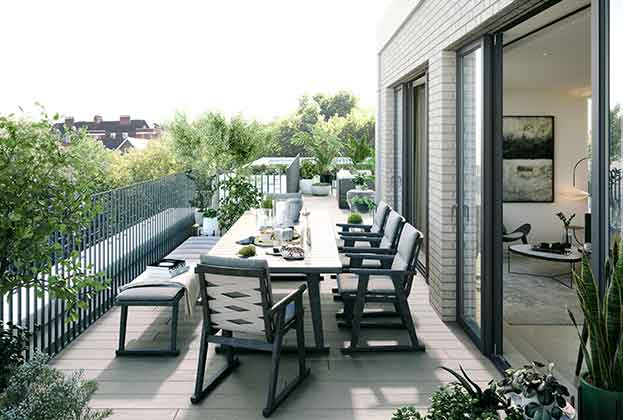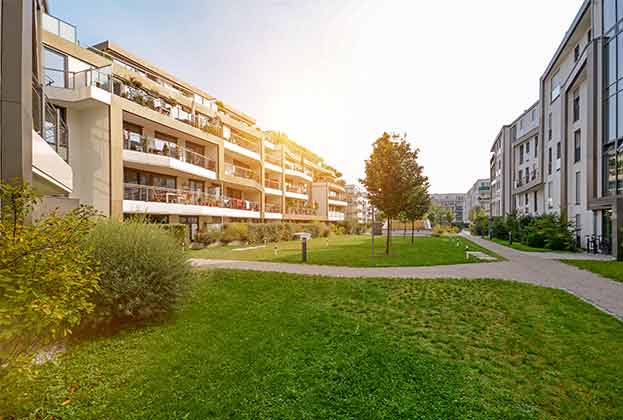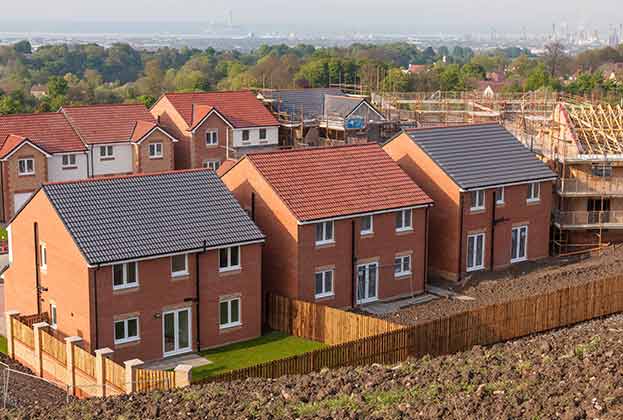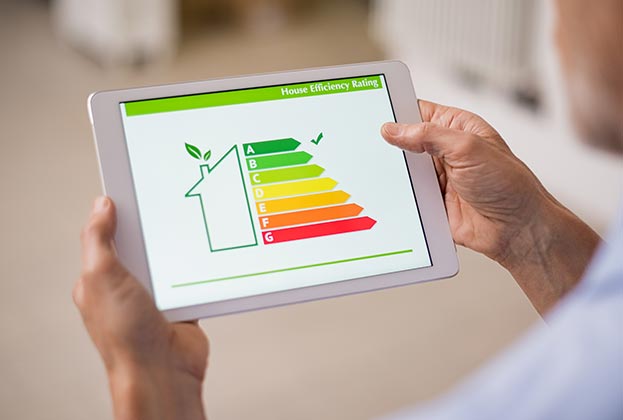From community and wellbeing to energy efficiency and flexible living spaces, developers must innovate and adapt to stay relevant
Developments of the future will need to adapt to buyers’ and occupiers’ needs and wishes to stay relevant and appealing. Earlier in this report we identified the acceleration of trends exposed by Covid-19 and how energy efficiency is increasingly important. But what other factors do we need to deliver the right homes – not just numbers?
Higher value developments (ESG, not just GDV)
We are used to measuring the value of places in monetary terms, such as house prices and gross development value (GDV). But there is a rising need to look beyond the financial and measure places for their environmental, social and governance (ESG) value.
The environmental value is increasing in importance for buyers, as our recent survey of Savills applicants suggests, but costs can inhibit who can afford to choose a more energy-efficient option. The importance of social value has been accentuated by the Covid-19 pandemic. More of us have been spending time in the area around our homes rather than the workplace and there’s been a renewed focus on sense of community, health and wellbeing, which to a greater or lesser extent is here to stay. Therefore the new homes we build need to be created in places with greater social, environmental and health benefits for the future.
There is a rising need to look beyond the financial and measure places for their environmental, social and governance (ESG) value
Savills Research
Being a business with better ESG credentials also opens the door to more investment. Investments that support the UN sustainable development goals (adopted by all UN member states in 2015) including ‘sustainable cities and communities’ and ‘good health and well-being’ are important to investors too. 56% of those surveyed in DFID’s Investing in a Better World report stated they wanted all or part of their pension to be in sustainable investments, and according to data from Morningstar, annual European sustainable fund flows more than doubled between 2018 and 2019 from €50 billion to €120 billion, increasing by 1.4 times.
The affordable housing sector has a head start on this, by virtue of the people it is providing homes for. However, the whole development sector has a way to go to contribute more towards these goals. Smaller developers could benefit too, as the weight of money searches for opportunities to be deployed. Measuring ESG criteria has proved challenging but the UK social housing white paper Building a Sector Standard Approach for ESG Reporting, published in May 2020 by The Good Economy, is a big step forward and includes themes from affordability to resident support and climate change.
.jpg)
Colin Palmer Photography / Alamy Stock Photo
Creating places, not just homes
We need to be creating friendly, welcoming places that work on a human scale with the mix of uses needed for a community to function including schools, GP surgeries and local shops. Places that provide good internal connectivity but also connect beyond their boundaries to transport, energy and broadband networks, linking them sustainably into existing infrastructure.
We also need mixed communities of old and young people. The Intergenerational Foundation’s report Generations Apart? found that there is increasing age segregation, which hinders care of the elderly, exacerbates loneliness and marginalises young people. It is also contributing to a general increase in segregation by age group, social class and ethnicity that is estimated to cost the UK economy £6 billion each year. New developments that deliver housing and environments for a wide range of ages of people, from play areas to dementia-friendly routes, are a way to counter this problem.
Ensuring the places we deliver enhance health and wellbeing has been made increasingly important in light of the Covid-19 pandemic. The health cost to the NHS of conditions exacerbated by poor housing is currently estimated to be £1.4–2 billion per year in England alone. The Healthy New Towns programme with 10 demonstrator sites is a start, but all developments need to prioritise health and wellbeing if we are to make real change. Encouraging walking and cycling to local amenities and parks rather than driving, using the stairs rather than the lift, ensuring high air quality and mitigating noise pollution are all part of this. Providing allotments and only allowing healthy food stores and eateries could be others.
As well as creating places that are best for us to live in, new developments need to enhance biodiversity. The Environment Bill proposes 10% net biodiversity gain becomes a condition of planning permission.
Flexibility
As lockdown has shown us, we can be creative with what space we have in our homes to work, live and play all in one space. New homes of the future need to be as flexible as possible to allow for changing lifestyles and life stages, working at home and play time. Designs that optimise space within an affordable home and create segregated quiet areas to work and room to spread out will be key.
The impact on land
The increased expectations for new development and the cost of providing it, from enhanced energy efficiency to appropriate infrastructure, comes with pressure on land values. The challenge for the proposed infrastructure levy will be whether it can be structured to ensure delivery of the social and physical infrastructure we will need while maintaining a competitive return to a willing landowner.
Stay informed
You can read more in our publications below, or subscribe to future publications and receive our latest research directly to your inbox
Read the articles within Spotlight: Delivering new homes resiliently below.
.jpg)



